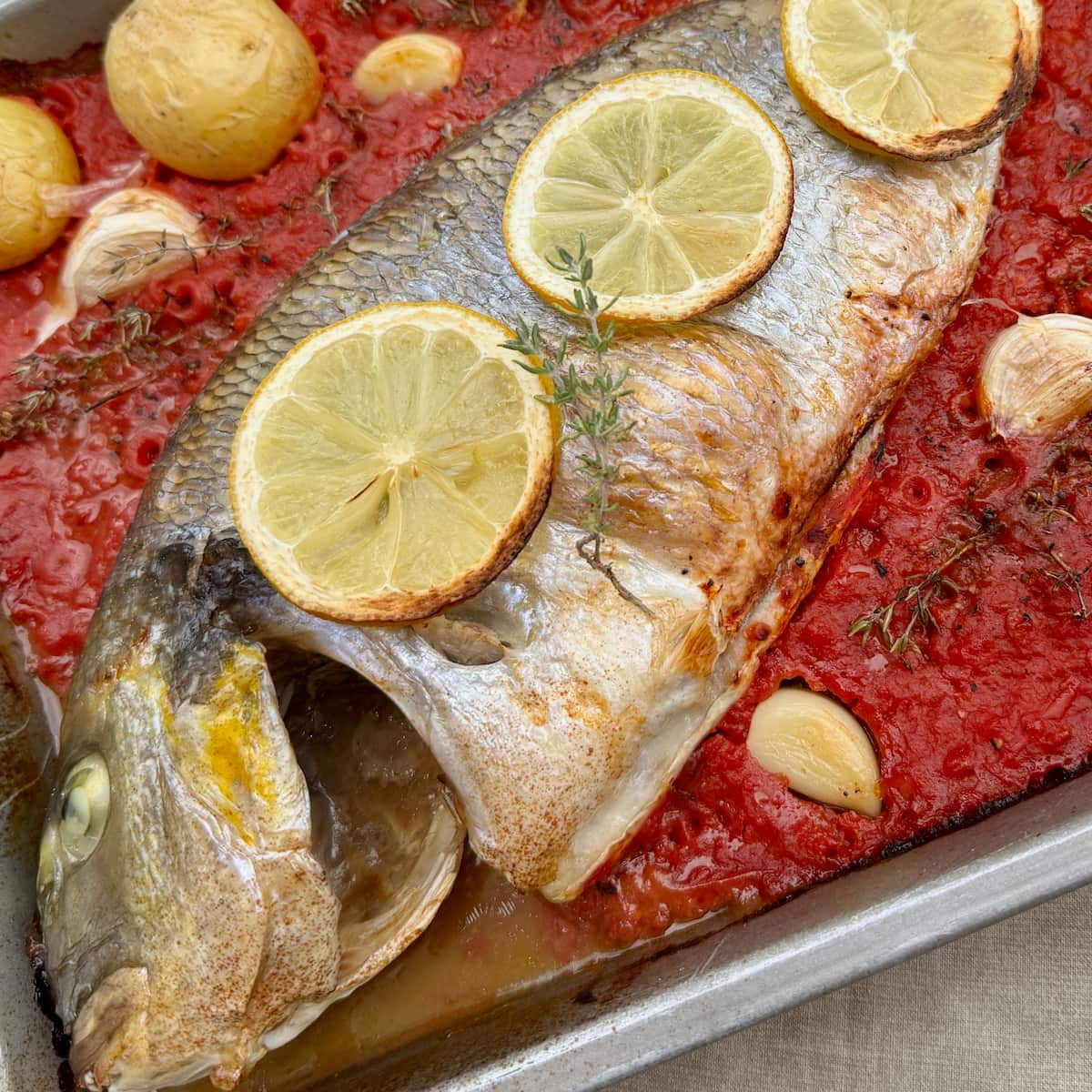Baked Sea Bream Provençal Style
Discover the charm of Mediterranean dining with this delightful recipe for sea bream, a perfect dish for any occasion. Whether you choose to serve it whole or as fillets, this Provençal-style preparation brings together the freshest flavors of tomatoes, garlic, thyme, and lemon, delivering a taste of summer even in the chilly months. Let’s dive in and bring a slice of France into your kitchen!
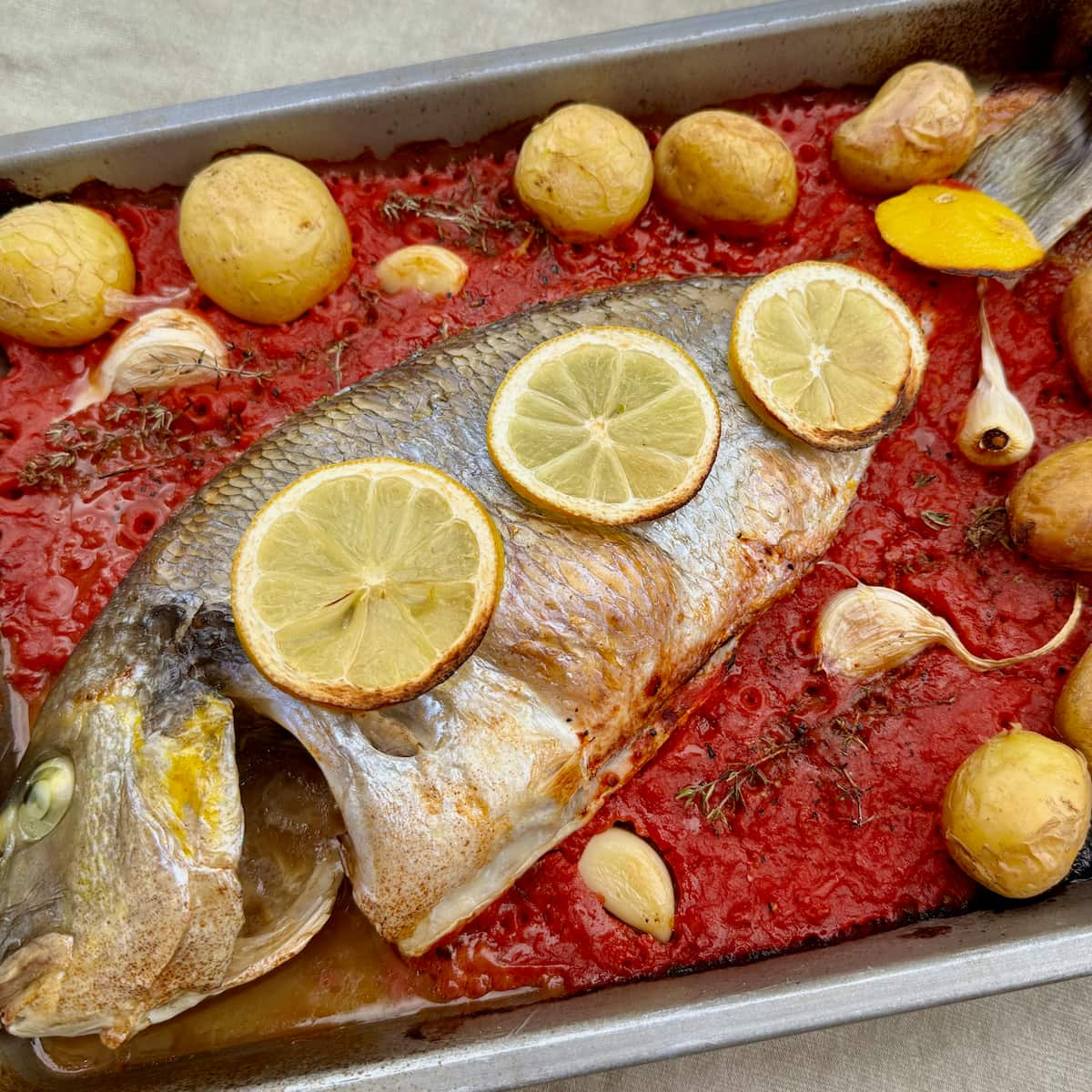
Ingredients
- 1 whole sea bream (1kg/2lb), cleaned and gutted
- 2 bay leaves
- 500g (1lb) tomatoes, roughly chopped (or good quality canned tomatoes)
- 6 cloves garlic, unpeeled and left whole
- 3 sprigs lemon thyme
- 10 small new potatoes, scrubbed clean with skins on
- 1 lemon, unwaxed and organic
- 45ml (3 tbsp) extra virgin olive oil
- ¼ teaspoon salt
- Freshly ground black pepper, to taste
Instructions
Preparing the Oven and Fish
- Preheat the oven: Start by preheating your oven to 220°C (200°C fan) or 425°F (Gas mark 7). Rinse the sea bream under cold water, gently pat it dry, and place it in a deep roasting dish on top of the bay leaves.
- Add tomatoes: If you’re using fresh tomatoes, place them into a bowl of boiling water for 10-15 seconds, then transfer them to cold water. Peel, halve, and remove the seeds before roughly chopping. Pour the chopped tomatoes around the fish or use a good-quality canned version for convenience.
- Flavor bomb: Scatter the unpeeled garlic cloves, lemon thyme, and new potatoes around the fish. Slice the lemon into medium slices and place it on top of the fish. Drizzle the entire dish with olive oil and sprinkle with salt and freshly ground pepper.
- Time to bake: Place the dish in the oven and bake for about 30 minutes, or until the fish is cooked through. The cooking time may vary depending on the size of your fish, so keep an eye on it!
Building Flavor
Toss In the Vegetables
Baking It to Perfection
Understanding Sea Bream
What Kind of Fish is Sea Bream?
Sea bream, often found in the Mediterranean and parts of the Atlantic and Indian Oceans, is a member of the Sparidae family. Renowned for its mild, slightly sweet flavor, sea bream stands out for its clean taste, often described as less “fishy” compared to other white fish. It’s a beloved choice in Provençal cuisine.
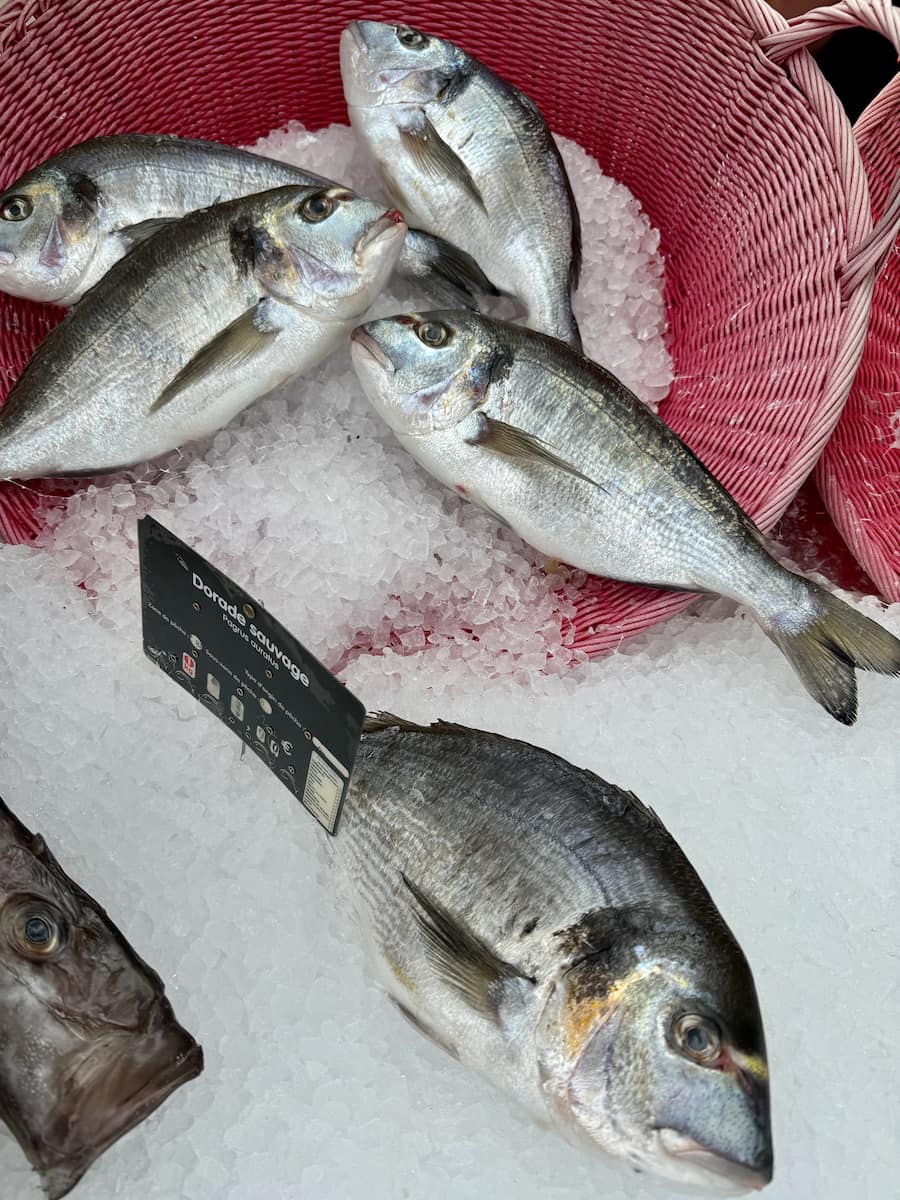
Other Names for Sea Bream
Popularly known as (Dorade or Daurade) in France, sea bream has several variations:
- Gilthead Bream: The most common variety found in the Mediterranean.
- Dorade Royale: Another name used particularly in France.
- Also known regionally as Kurali, Pandora, Becker, and Porgies, falling under the scientific genus Pagrus.
It’s important to note that while red snapper shares some similarities with sea bream, they are distinct species.
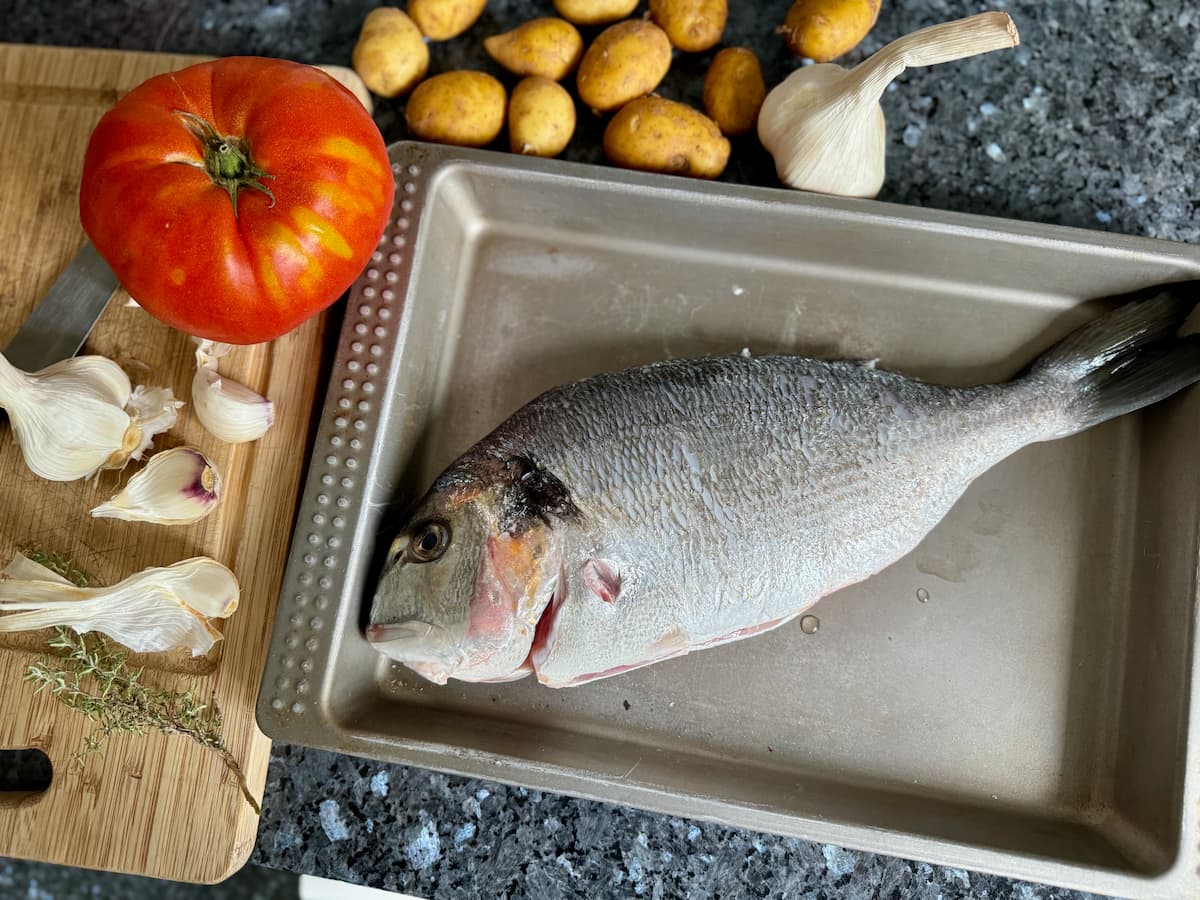
Cooking Tips for Sea Bream
To achieve the best results, it’s ideal to cook sea bream with Mediterranean flavors like tomatoes, garlic, and fresh herbs. One of my favorite methods is simply baking it with these vibrant ingredients.
Can You Remove the Bones?
When serving a whole baked fish, you can easily remove the central bone. Simply slice off the top fillet above the bone and carefully take it out, ensuring to check for any smaller bones around the head region as well.
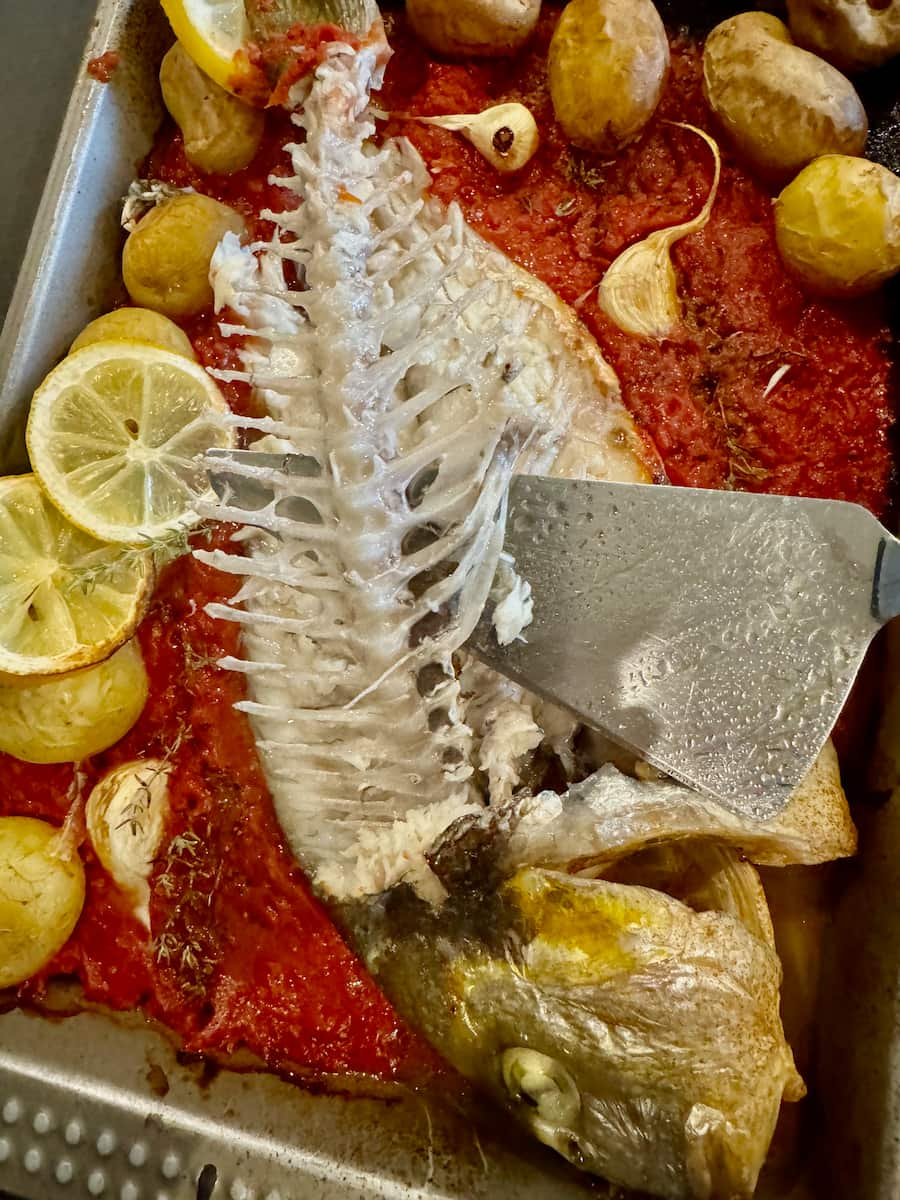
Whole Fish vs. Fillets
The traditional method involves cooking the whole fish, but fillets can make for easier serving. Don’t hesitate to ask your fishmonger to clean and gut the fish for you or prepare the fillets while keeping the skin on for flavor.
Cooking Fillets
If you’re opting for fillets, place them skin-side down in an ovenproof dish, cover them with tinned or fresh tomatoes, and bake until tender. This method offers a quicker meal without the fuss of bones!
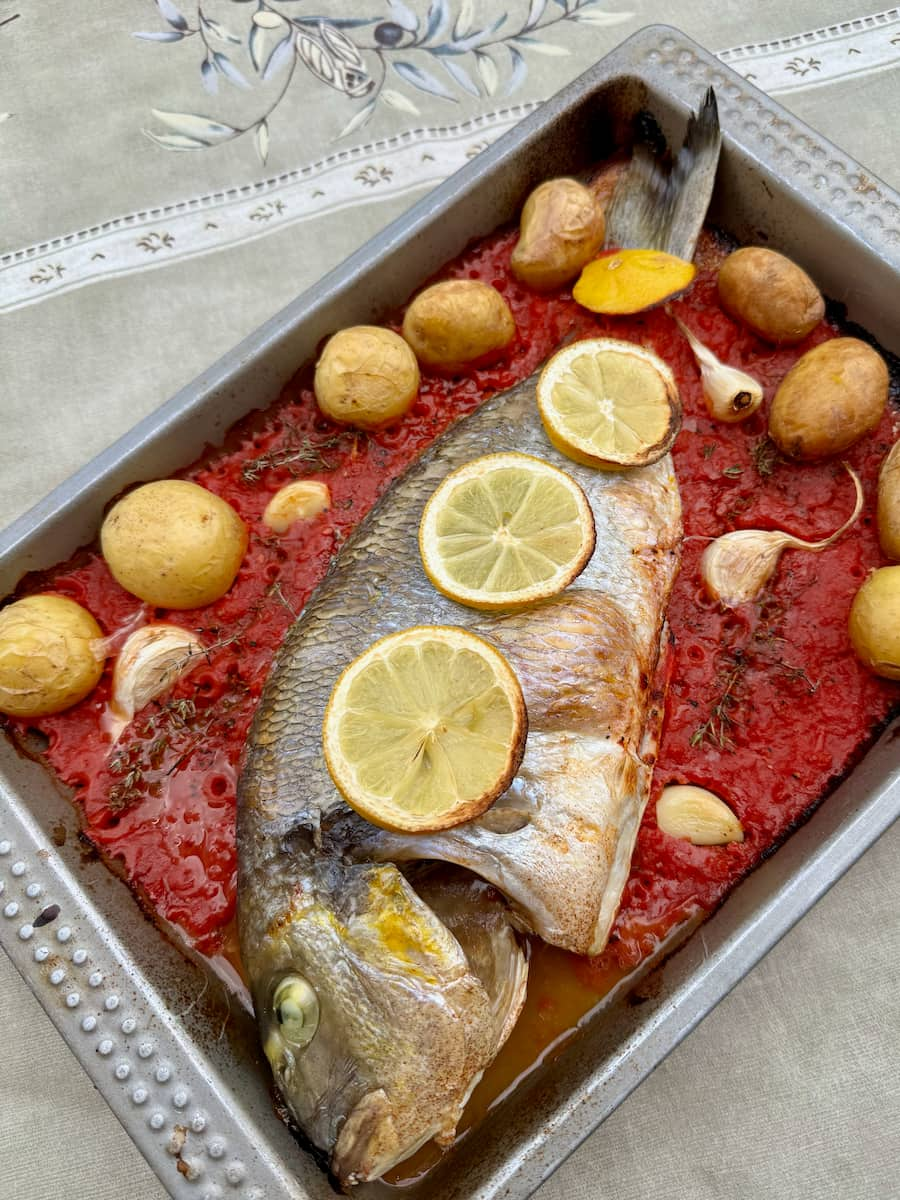
Is Fish Skin Edible?
Yes! As long as the fish has been properly cleaned and the scales removed, sea bream skin is totally safe to eat and can add a delightful crispness when cooked.
